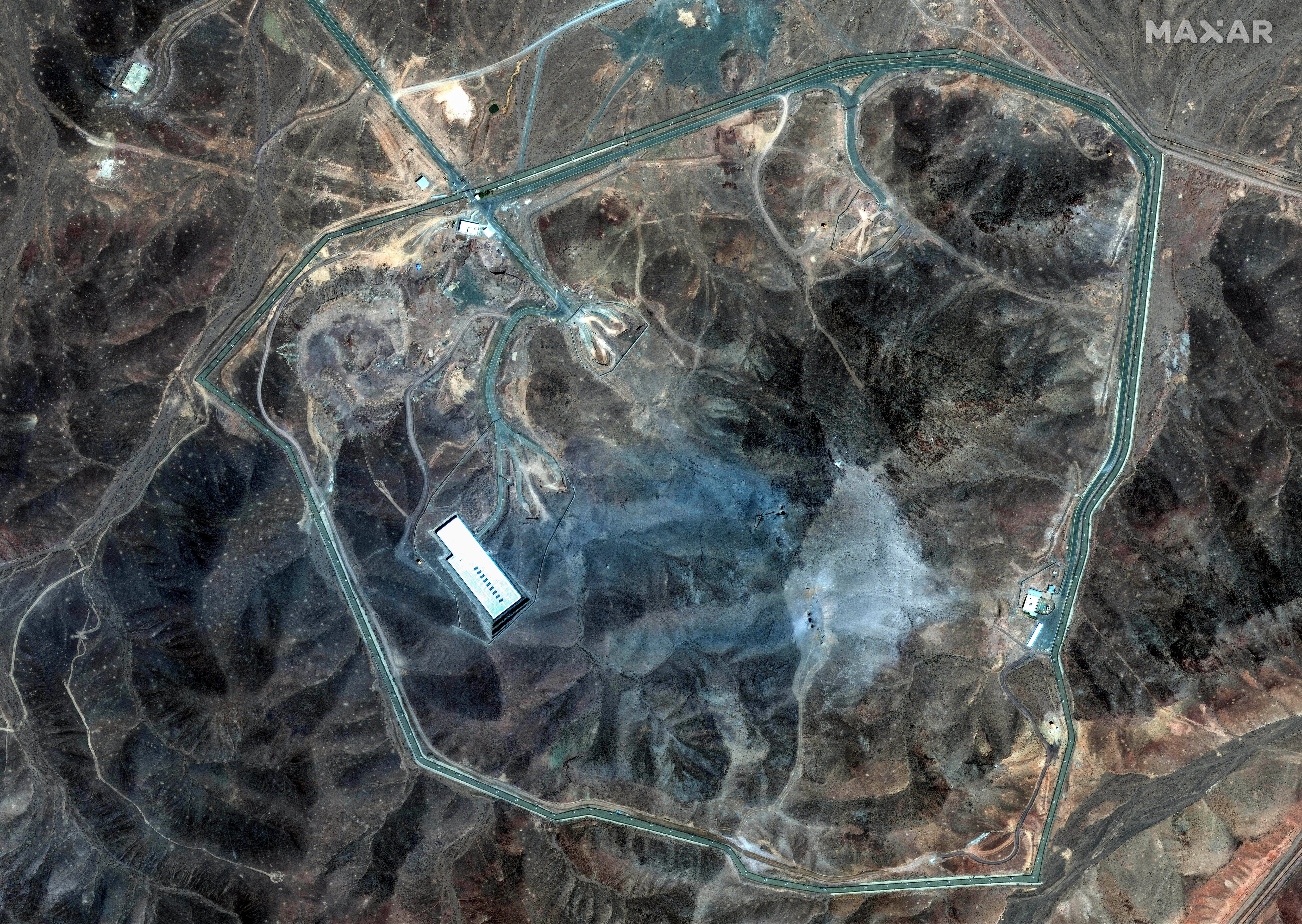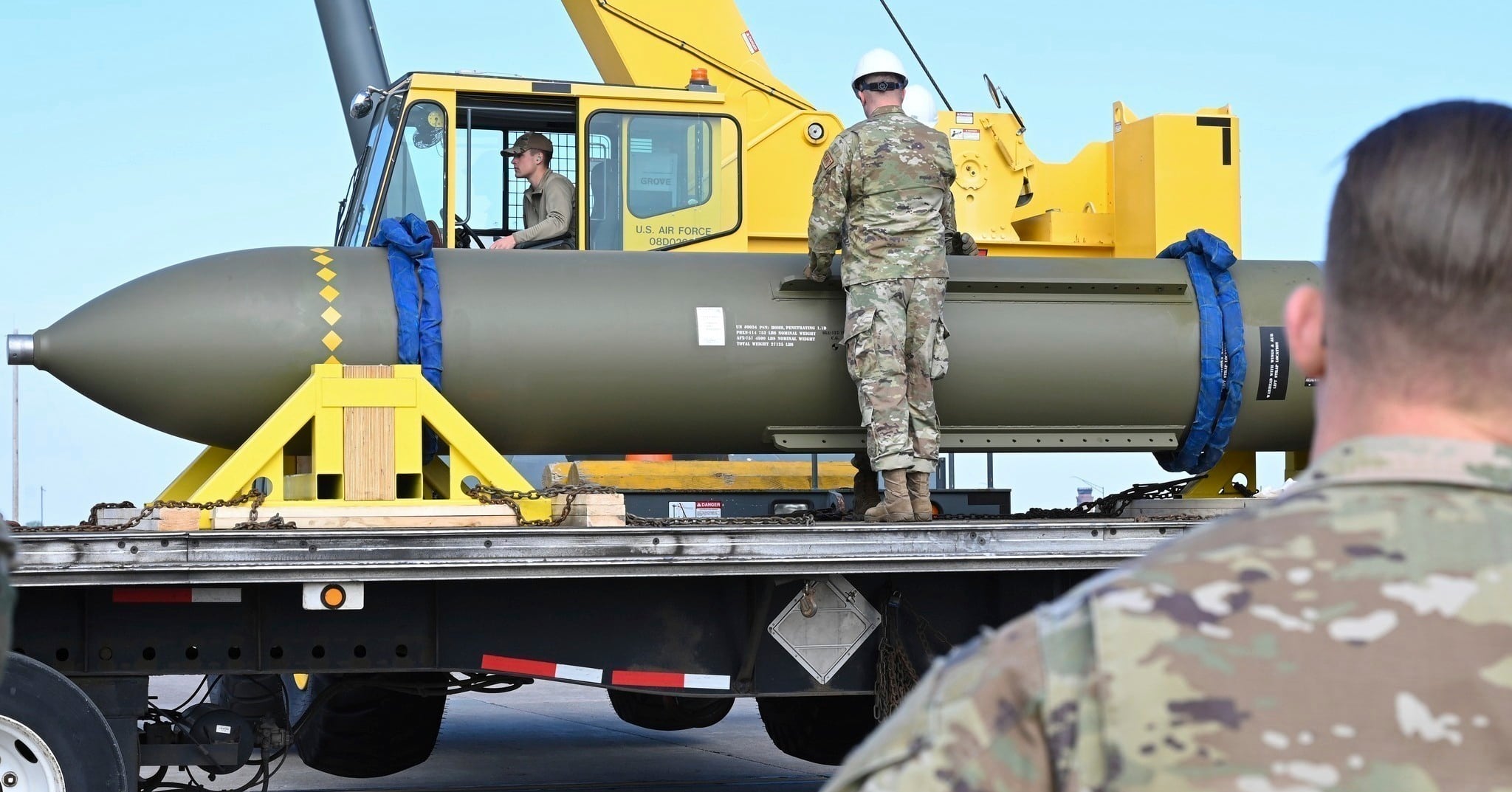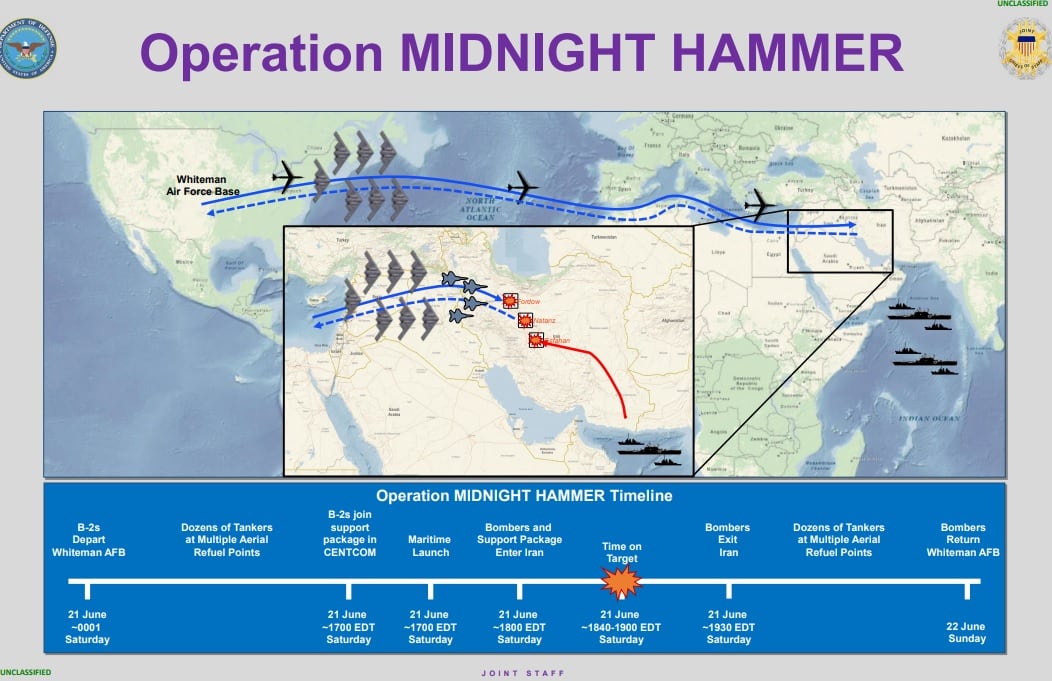
Defense Secretary Pete Hegseth on Sunday insisted that U.S. officials are not seeking regime change in Iran following American military airstrikes against nuclear facilities there.
But he warned that any response for those actions “will be met with force far greater than what was witnessed” this weekend.
“All of our precision munitions struck where we wanted them to strike and had the desired effect,” Hegseth told reporters during an early morning press conference hours after the military assault.
“We believe we achieved destruction of capabilities there. … It would be a very bad idea for Iran or its proxies to attempt to attack American forces [in response].”
The airstrikes — dubbed Operation Midnight Hammer — began early morning Saturday, with American B-2 stealth bombers launched from the U.S. homeland for a highly classified mission.
Once in air, part of the group flew west toward a destination reported to be Guam, while seven others diverted east.
RELATED

Shortly after the aircraft joined escort fighters over the airspace of Iran — their actual destination — American submarines launched Tomahawk cruise missiles at the Iranian sites. Within hours, the bombers had dropped 14 massive ordnance penetrators, 30,000-pound bunker busting bombs that had never before been used in combat, and the missiles had reached their targets.

In total, the operation targeted at three of Iran’s main nuclear sites involved 125 American aircraft, 75 precision weapons and a bevy of other military assets still in motion.
With it, the United States has taken the enormous bet that setting back Iran’s nuclear program is worth the risk of another widespread conflict in the Middle East, especially if the retaliation from Iran’s military causes major damage.
Central Command has been preparing for a potential attack from Iran after the unprecedented direct strike, which could more deeply involve the U.S. in a war that began little more than a week ago.
“Our forces remain on high alert and are fully postured to respond to any Iranian retaliation or proxy attacks, which would be an incredibly poor choice,” said Chairman of the Joint Chiefs of Staff Gen. Dan Caine, who spoke alongside Hegseth.
The Pentagon’s battle damage assessments are still early, but initial returns are that “all three sites sustained extremely severe damage and destruction,” Caine said of the nuclear infrastructure targeted.
Leading up to Saturday, Trump had vacillated on whether to join the war in Iran. Israel’s own airstrikes had successfully targeted Iranian leadership, but they didn’t carry the needed firepower for more lasting damage.
The United States military had the only weapons thought capable of destroying Iran’s best defended nuclear sites, in particular the Fordo complex dug into a mountain and reinforced with heavy concrete.

But by late last week, after days of deliberation, the White House had said the president may take up to two weeks to decide whether to directly join the airstrikes.
Those questions ended with Saturday’s operation.
“There’s no military in the world that could have done what we did tonight, not even close,” Trump said in late-night remarks Saturday from the White House.
By involving its own military in that fight, though, the U.S. opens itself up to a new level of risk.
America has 40,000 forces in the region, up from its usual number of 30,000 while responding to the ongoing crisis, according to the Pentagon. Many of its major bases, including Central Command’s regional headquarters, are located on the Persian Gulf, within range of Iran’s massive store of ballistic and cruise missiles.
Caine on Sunday declined to give specifics on what force protection measures were being put in place to enhance security for U.S. personnel in the region or across the globe.
“We’re being proactive and not reactive, and being very thoughtful about ensuring that we do all that we can to protect our forces out there,” he said.
More than any other foreign policy issue thus far, the question of whether to directly attack Iran has split Trump’s coalition.
More traditional defense hawks in Congress — such as Chairman of the Senate Armed Services Committee Roger Wicker, R-Miss., — supported the strikes and have called for a robust defense of Israel.
But many members of the Republican Party’s newer MAGA wing were vocally critical, warning that U.S. involvement risked another protracted war in the Middle East without clear goals.
On Sunday, Hegseth said the operation’s intent was to set back Iran’s nuclear program and purposefully avoided certain targets.
“The scope of this was intentionally limited,” Hegseth said, while denying that the mission was “open ended.”
Trump’s own director of national intelligence testified earlier this year that Iran’s nuclear program isn’t yet being weaponized, though Trump later dismissed the assessment.
“I decided a long time ago that I would not let this happen,” Trump said of Iran acquiring a nuclear weapon.
The strikes Saturday follow a rapid military buildup in the Middle East, with America rushing warships, fighter jets and other support equipment to the region ahead of the attack. The surge continues a pattern that’s repeated itself in the year and a half since Israel’s war began in Gaza, following a raid by the terrorist group Hamas.
The Pentagon rushed military equipment into the theater to contain a wider regional war, twice defending Israel from what were then unprecedented airstrikes from Iran in April and October last year.
With the attack Saturday, the U.S. has now decided to take part in such a war, accepting the risk of entanglement when Iran likely strikes back.
Still, Hegseth argued that the nature of the operation, with U.S. bombers flying from the homeland and hitting Iranian sites undetected, would itself send a signal of how the U.S. would respond to further attacks.
“We believe that will have a clear psychological impact on how they view the future,” he said of Tehran’s government.
Noah Robertson is the Pentagon reporter at Defense News. He previously covered national security for the Christian Science Monitor. He holds a bachelor’s degree in English and government from the College of William & Mary in his hometown of Williamsburg, Virginia.
Leo covers Congress, Veterans Affairs and the White House for Military Times. He has covered Washington, D.C. since 2004, focusing on military personnel and veterans policies. His work has earned numerous honors, including a 2009 Polk award, a 2010 National Headliner Award, the IAVA Leadership in Journalism award and the VFW News Media award.







-3.png)



